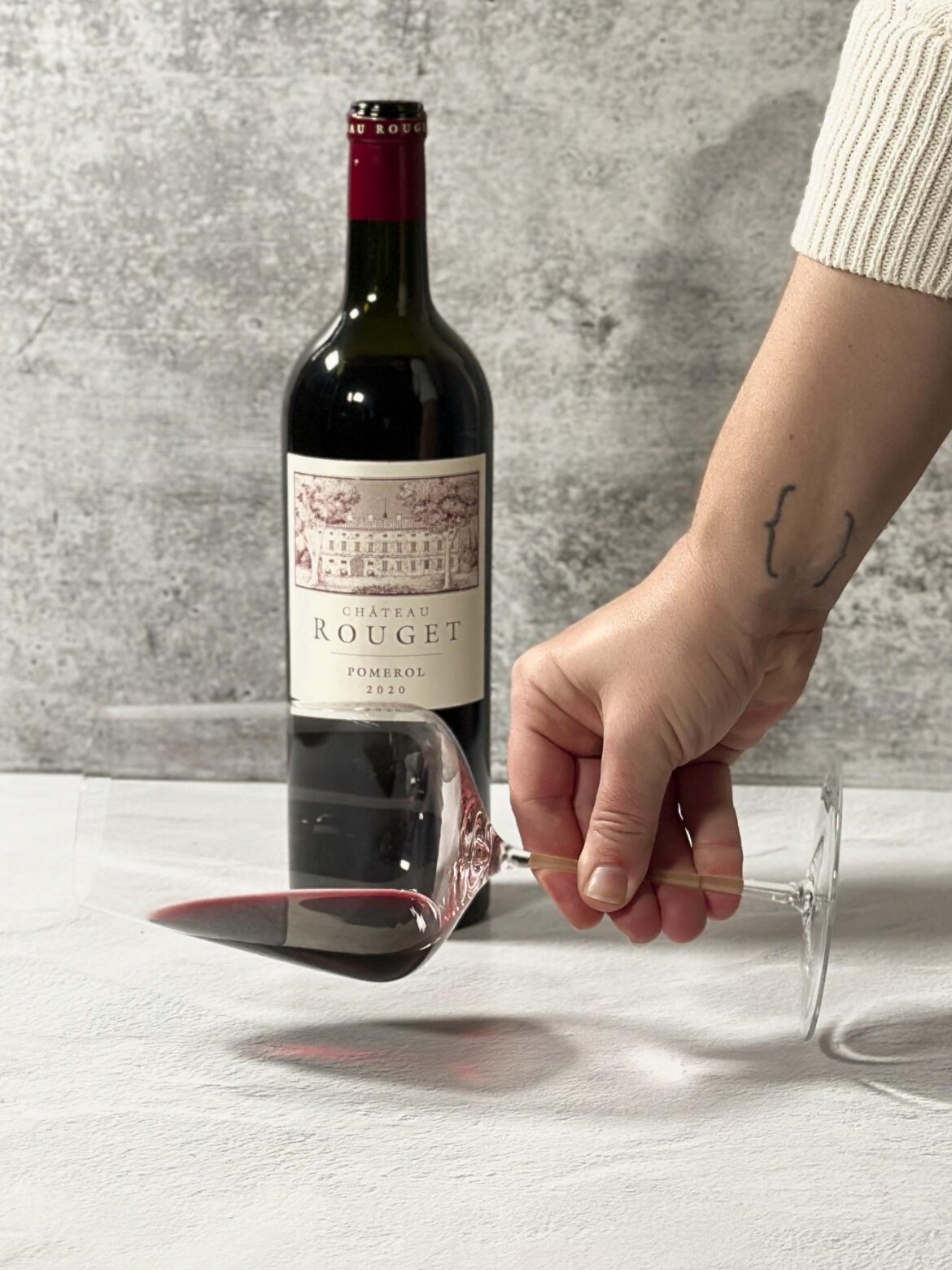
It’s Merlot Thursday, so I’m tasting this Right Bank Bordeaux (80% Merlot, 20% Cab Franc). The estate has had vineyards on its land as far back as the end of the Roman Empire, although its vines are slightly younger (40 years on average). I’m drinking this bottle on the earlyish end of the window, but I don’t think it’s too soon.
The wine is deep ruby in color, and I picked up aromas of dark plum, black currant, and something floral *. The fruit notes are ripe and vibrant — medium-plus intensity.
It’s medium-bodied, medium acidity, has medium tannins and a ripe, velvety texture. The label indicates 14.5% alcohol, which counts as high, but it’s quite well-integrated. The finish is long and leans into the deep fruit flavors. The fruit notes (plum, currant, cherry) are dark and ripe, there’s dark chocolate on the back, and I didn’t pick up any significant tertiary flavors at this time.
This bottle was 57°F (14°C) out of the wine fridge. I opened it, then waited around 20 minutes before pouring — at serve-time, it was 60°F (16°C). The glass here is a Zalto universal, although I’m curious whether Bordeaux glasses would be a good investment. Someone please enable or talk me out of this.
I paid a little under $50 for it, but I’ve seen it priced up to nearly $70 online. If it’s still in stock locally, I’ll be picking this up again and considering holding for another year or three. If it’s still in the $48 range, I’ll pick up another to drink this year.
* I need help identifying floral notes. I can spot violet and honeysuckle, but the rest evade me. Anyone got tips?
by ultravioletneon


2 Comments
Thank you for your notes.
To answer some of your questions:
I personally use Gabriel-Glas Golds as my universal glass, and I find them to be on-point for basically any wine (including sparkling). I used to subscribe to the different types of glasses, but find that enhancement doesn’t warrant the investment.
For picking up floral notes (or any notes, for that matter), don’t try to force it. If you don’t sense them, you don’t. If you want to sharpen your abilities to sniff out nuance, try looking at a chart and asking yourself if you get those aromas. A nice little chart is the one from Wine Folly:
https://winefolly.com/tips/wine-aroma-wheel-100-flavors/
One quick nitpick about your notes, though: the 2020 Château Rouget is actually 85% Merlot and 15% Cabernet Franc. If you would like to see more specifics on the vintage, viticulture, and oenological practices, here’s the tech sheet:
https://dreyfusashby.com/wp-content/uploads/2023/08/Rouget-20-TECH.pdf
Never tried it. Thanks for the tip